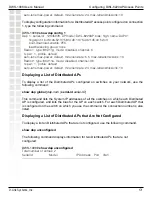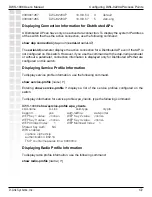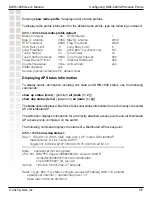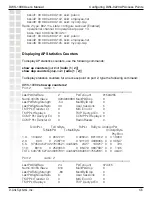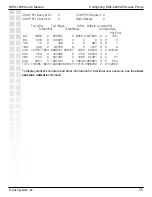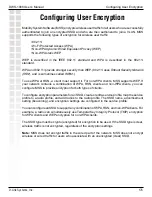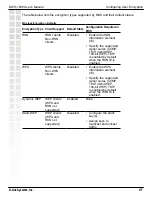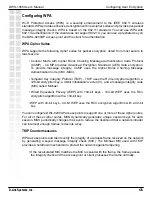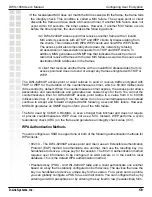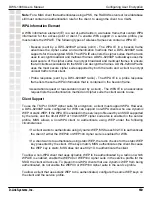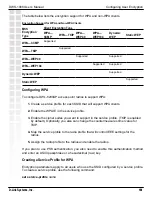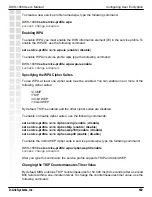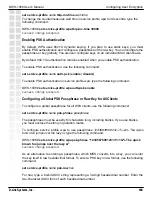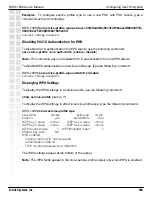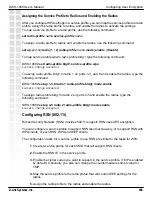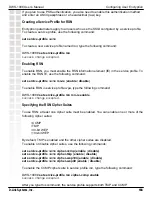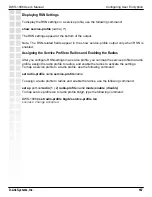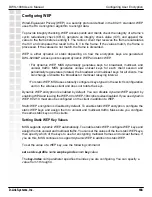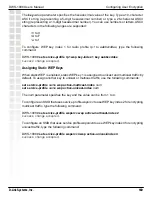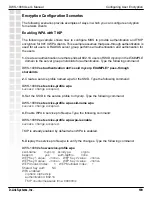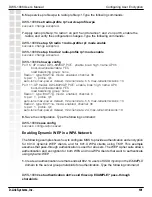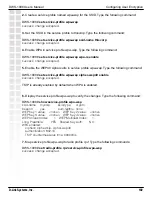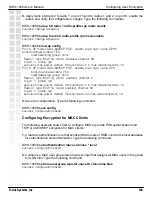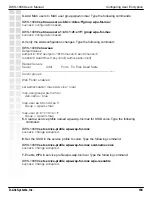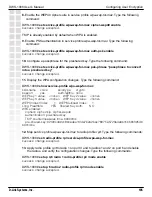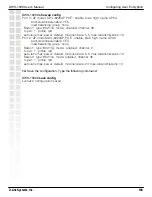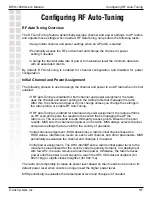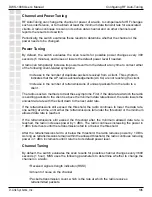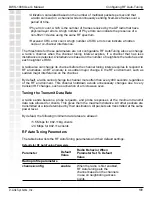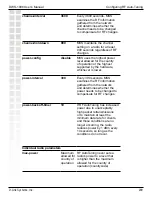
185
DWS-1008 User’s Manual
D-Link Systems, Inc.
Configuring User Encryption
185
D-Link Systems, Inc.
Assigning the Service Profile to Radios and Enabling the Radios
After you configure WPA settings in a service profile, you can map the service profile to a radio
profile, assign the radio profile to radios, and enable the radios to activate the settings.
To map a service profile to a radio profile, use the following command:
set radio-profile
name
service-profile
name
To assign a radio profile to radios and enable the radios, use the following command:
set ap
port-list
radio
{
1
|
2
}
radio-profile
name
mode
{
enable
|
disable
}
To map service profile
wpa
to radio profile
bldg1
, type the following command:
DWS-1008#
set radio-profile blgd1 service-profile wpa
success: change accepted.
To assign radio profile
bldg1
to radio 1 on ports 1-3, and 6 and enable the radios, type the
following command:
DWS-1008#
set ap 1-3,6 radio 1 radio-profile bldg1 mode enable
success: change accepted.
To assign radio profile
bldg1
to radio 2 on ports 4-5 and enable the radios, type the
following command:
DWS-1008#
set ap 4-5 radio 2 radio-profile bldg1 mode enable
success: change accepted.
Configuring RSN (802.11i)
Robust Security Network (RSN) provides 802.11i support. RSN uses AES encryption.
You can configure a service profile to support RSN clients exclusively, or to support RSN with
WPA clients, or even RSN, WPA and WEP clients.
The configuration tasks for a service profile to use RSN are similar to the tasks for WPA:
1.
Create a service profile for each SSID that will support RSN clients.
2.
Enable the RSN IE in the service profile.
3.
Enable the cipher suites you want to support in the service profile. (TKIP is enabled
by default.) Optionally, you also can change the countermeasures timer value for
TKIP.
4.
Map the service profile to the radio profile that will control IEEE settings for the
radios.
5.
Assign the radio profile to the radios and enable the radios.

